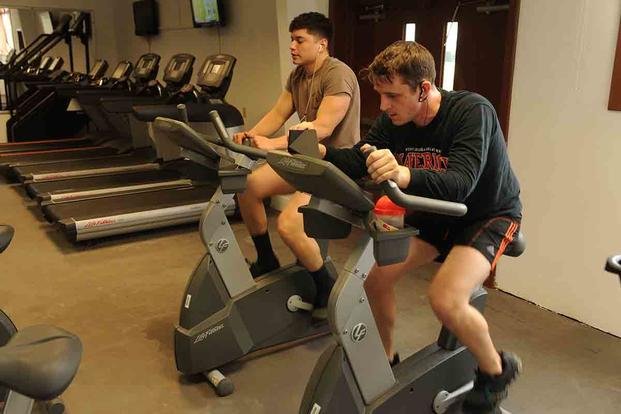[ad_1]
As you begin your journey into the tactical professions, you will see many people who need to improve their running. Their athletic history may not have involved much long-distance running (or none at all), or they may be prone to running injuries like shin splints, runner’s knees, tendonitis, etc.
Runners with different histories have different paths to improvement. Here is an email from a young man preparing for a special operations program in his future and working to get good at everything – including his weakness, running.
Stew, I have one of your exercise programs and I’m not sure I can handle your running volume as even your first week is over 15 miles. Any suggestions? Did I get the wrong program or should I just go for it? I no longer want shin splints like I did in my own training. Everything else looks great, but I need to run better. Thanks – Dylan
You should personalize each program, adjusting the repetitions and volume to suit your current skills. Don’t just jump into a five mile run without progressing over potentially significant periods of time to achieve this level of fitness and endurance. It takes time to build this running distance when the recommended weekly percentage for adding miles is only 10-15%.
My advice: if the runs seem too much to you, cut the miles in half and replace them with a gentle cardio exercise for the time it would have taken for the extra 50% so that you get all of the cardio with half the time impact .
For example, one of my favorite spare parts for running is cycling as it trains the lungs and legs like running, but without the impact pain. I recommend a stationary bike as you cannot roll and the risk of falling is negated.
Try these bike workouts:
Bicycle pyramid
Increase the resistance by a notch or two every minute until you can no longer hold the revs between 70 and 80. If you don’t keep him in this zone, then reverse down the pyramid in reverse order. You can do the entire pyramid or just for the time it would have taken you to run the miles you skipped in the general exercise program you are about to complete.
For example, if the day calls for a total of 5 to 6 kilometers of running (warm up, sprints, target pace, steady pace), cut that in half. No matter how long it took to run the first 50% of runs that day, get the same amount of time on the bike, elliptical or rowing machine, or add swimming time.
Bike intervals
The goal is to be as tired as you are when you run, like you are on a bike. Pushing hard on the bike for a sprint will increase your heart / breathing rate significantly. Do this quickly for a minute, followed by a minute slowly to catch your breath. Repeat this one minute quickly / one minute slowly for the time it takes to make up for any missed running exercises that day.
You can improve your running through this method. If you can avoid an injury that completely prevents you from running, you’ll be well prepared for your trip in no time. Try the program with the changes the first time, then repeat and see if you can run the full program as described the second time.
You will be asked to run and jerk many miles in your future workout (also called PT) so you will need to build on that, but do it based on your ability.
Work on your target mile pace: 6 to 7 minute miles for 1.5 mile runs (9:00 a.m. to 10:30 a.m. run time) and focus on running longer at a sub-7-minute mile pace (4th floor) Miles in.) Under 28 minutes / 5 miles in 35 minutes).
You can practice this pace at shorter intervals and over time build that pace and maintain it over the entire distance. Be patient and take the time to move on to longer runs, especially if your future training calls for longer runs and resilient events.
– Stew Smith is a former Navy SEAL and Fitness writer who is certified as a Strength and Conditioning Specialist (CSCS) by the National Strength and Conditioning Association. Visit his Fitness eBook shop when you want to start an exercise program to create a healthy lifestyle. Send your fitness questions to [email protected].
Would you like to learn more about military life?
Whether you’re thinking of going into the military, looking for fitness and basic training tips, or keeping up to date on the life and benefits of the military, Military.com has it for you. Subscribe to Military.com for military news, updates and resources delivered straight to your inbox.
Read complete message
© Copyright 2021 Military.com. All rights reserved. This material may not be published, broadcast, rewritten, or redistributed.
[ad_2]

